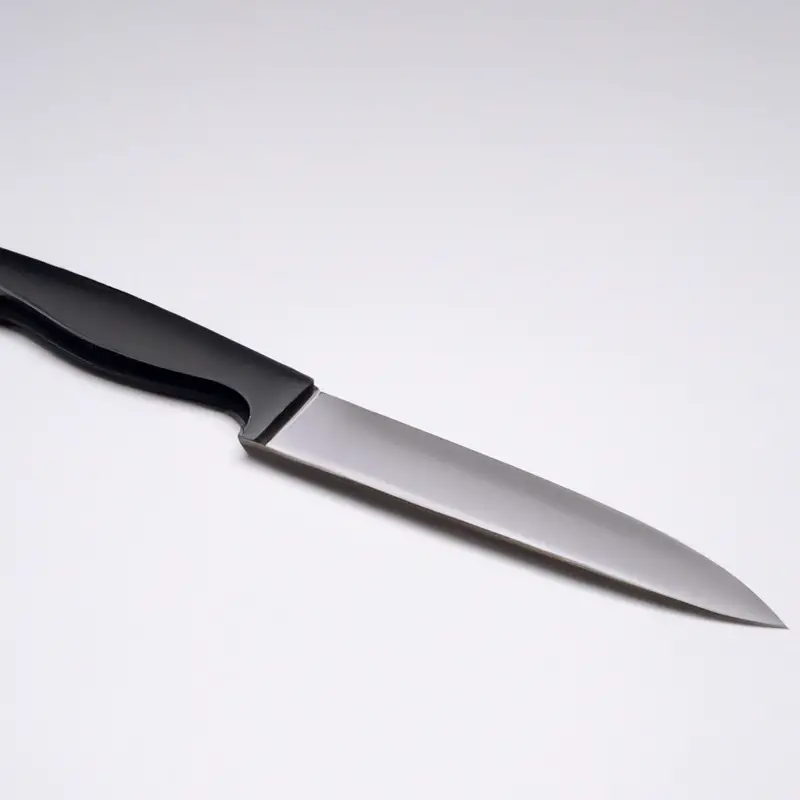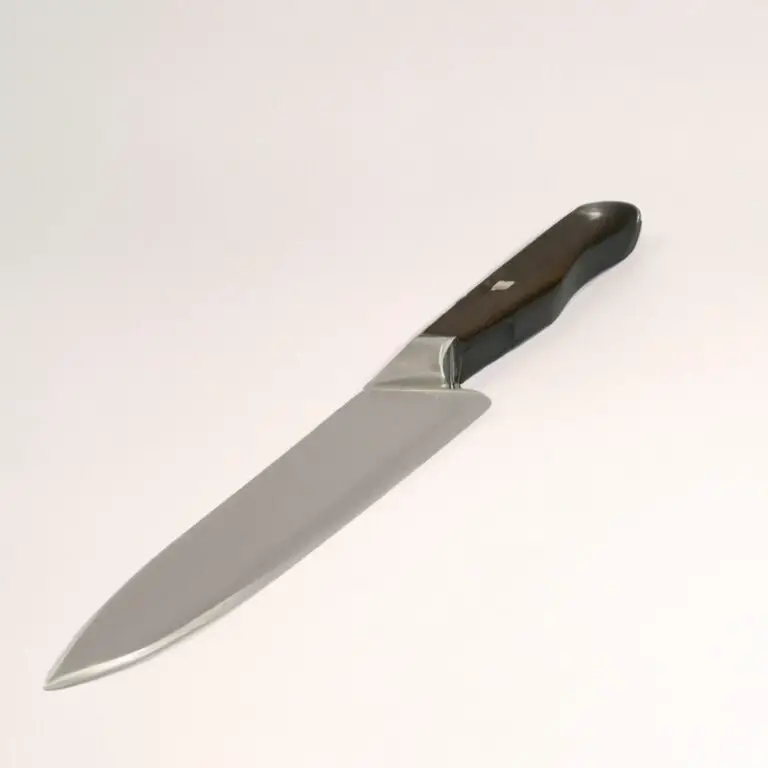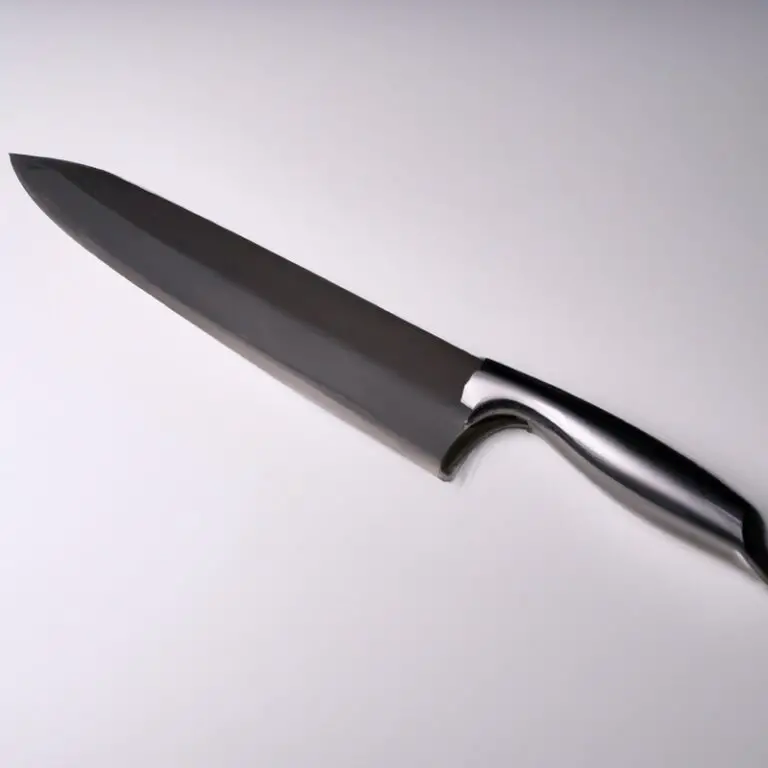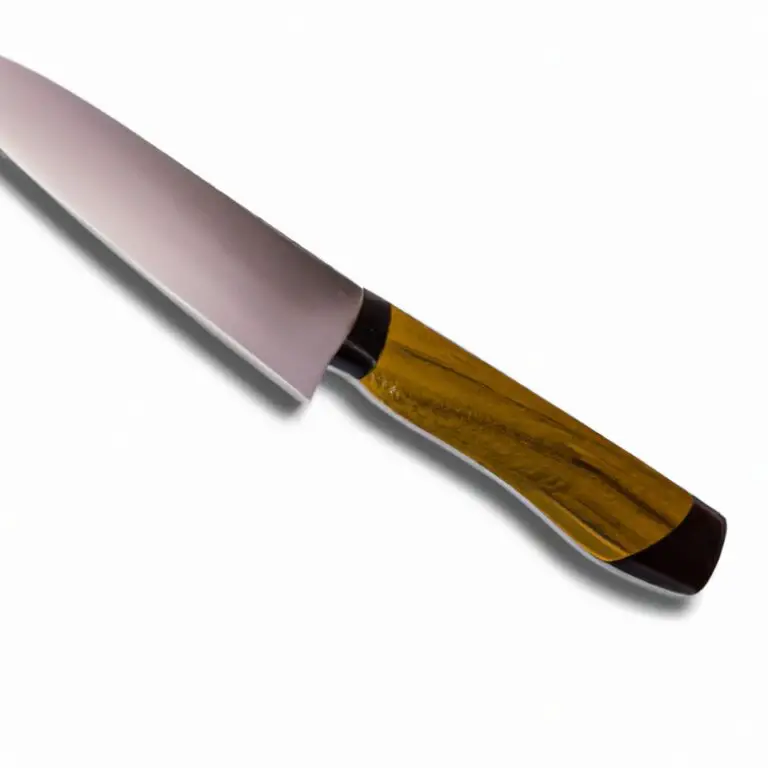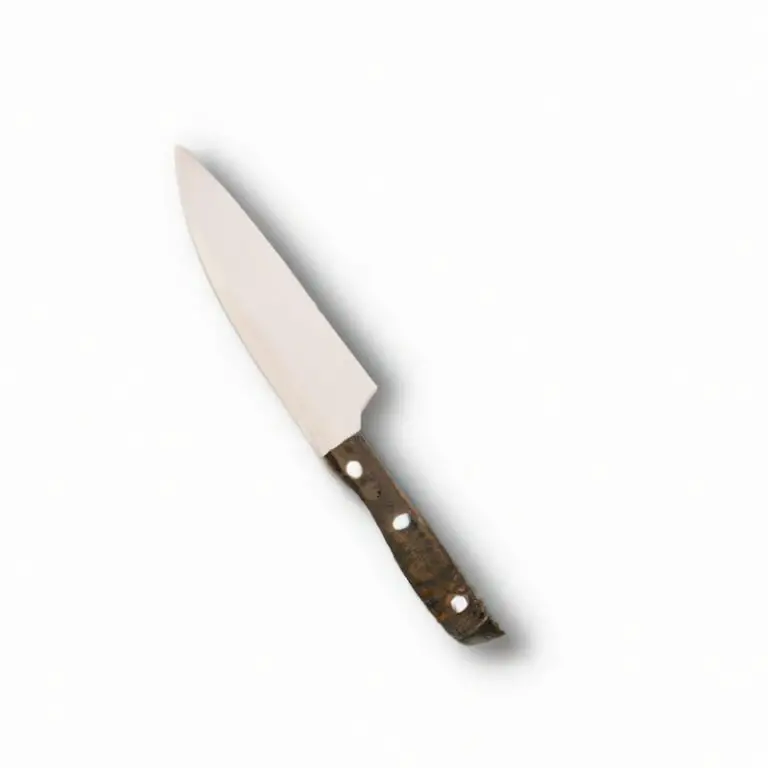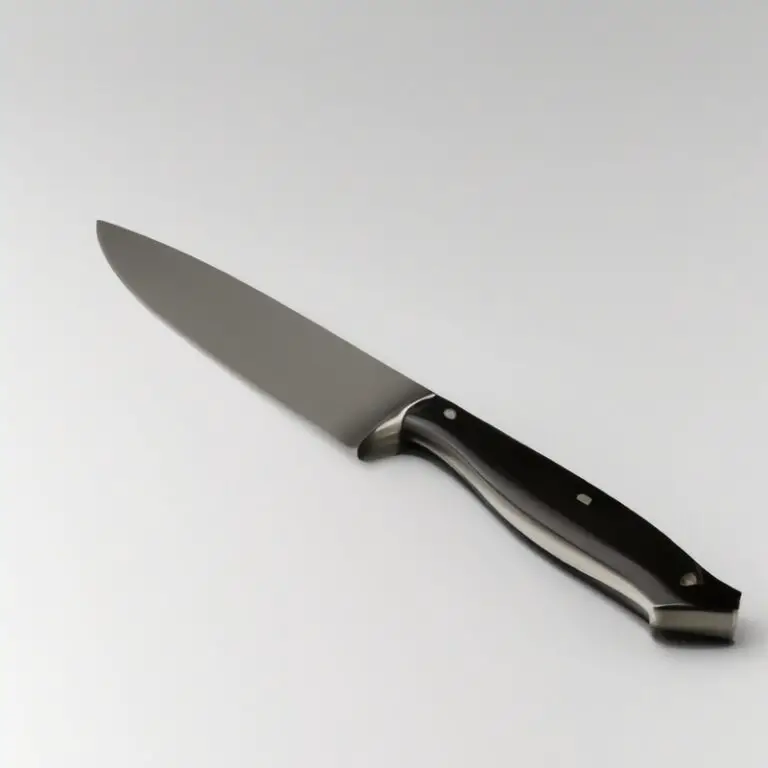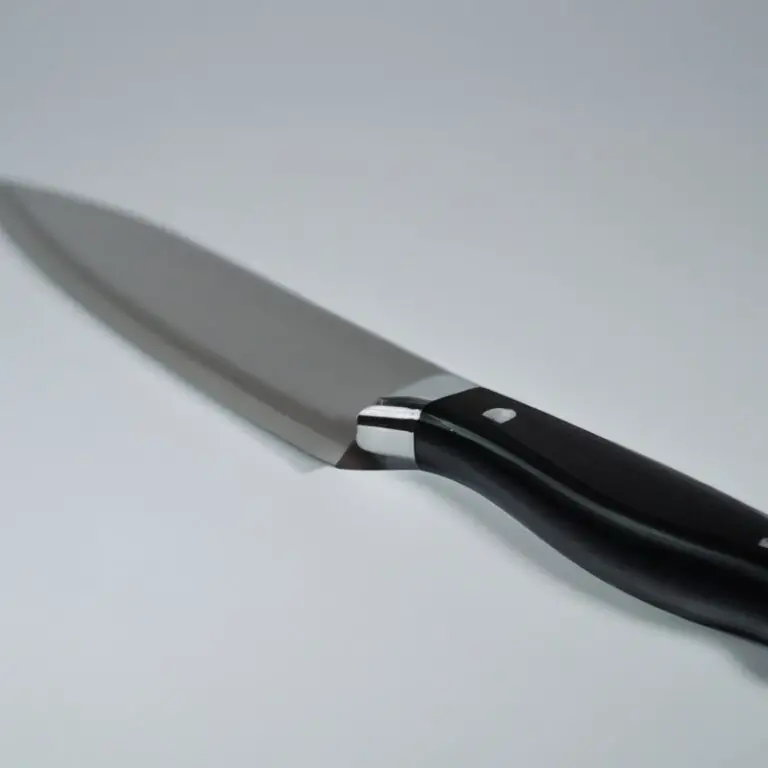How To Safely Clean a Chef Knife Without Scratching The Blade? – Tips
Key Takeaways:
- Use a soft cloth and gentle detergent to clean your chef knife after each use.
- Avoid using abrasive materials, such as scouring pads or steel wool, which can scratch the blade.
- Store your knife in a designated spot, such as a knife block or sheath, to prevent it from coming into contact with other objects.
- Sharpen your knife regularly to maintain its edge and avoid excessive force when cutting, which can cause scratches.
As chefs, we all understand the importance of a good quality chef knife. Not only does it make our work more efficient and easier, but it plays a crucial role in the taste and presentation of our dishes.
However, keeping your chef knife in top condition requires proper care and maintenance.
One of the biggest challenges of caring for a chef knife is cleaning it without causing damage to the blade. In this article, we’ll explore safe and effective cleaning techniques to help you keep your chef knife sharp and scratch-free.
So, let’s dive in!
Understanding the Composition of a Chef Knife: A Brief Overview of Different Blade Materials
Chef knives are essential tools that are commonly used in the kitchen for a variety of tasks. Understanding the different materials used to make the blades of chef knives is important in determining which one will suit your needs best.
Some common materials used in chef knife blades include:
- Stainless steel: This is the most common material used in the manufacturing of chef knives. Stainless steel blades are durable, easy to clean, and resistant to rust and stains. They are also cost-effective and ideal for everyday use.
- Carbon steel: Carbon steel blades are known for their excellent sharpness and edge retention. They are, however, prone to rust and require frequent sharpening and maintenance.
- Ceramic: Ceramic blades are lightweight, elegant, and durable. They are resistant to rust and stains, but they are also brittle and prone to chipping or cracking.
- Damascus steel: Damascus steel is a type of steel made from combining different metals. The resulting blade is strong, sharp, and durable. They are also aesthetically pleasing due to their unique patterns.
Understanding the differences between these materials will help you choose the right blade for your needs and ensure that you take proper care of your chef knife.
The Importance of Proper Cleaning: Keep Your Chef Knife in Top Condition
Proper cleaning is crucial to maintain the performance and longevity of your chef knife. Residue from food, acidic substances, and hard water can cause damage to the blade, leading to dullness and corrosion.
Moreover, bacteria can grow on improperly cleaned kitchen knives, posing a risk to food safety.
Clean your chef knife after every use with mild soap and warm water, then dry it thoroughly with a soft cloth. Avoid using abrasive materials like steel wool or harsh cleaning solutions, as they can scratch or corrode the blade.
Store your chef knife in a specialized holder or magnetic strip to prevent contact with other utensils and ensure a sharp edge.
By following these simple tips, you can maintain your chef knife in top condition and avoid costly repairs or replacements.
The Dos and Don’ts of Chef Knife Cleaning: Basic Rules You Need to Follow
Dos:
- Rinse the knife with warm water and mild soap immediately after use.
- Use a soft sponge or cloth to wipe it clean and dry.
- Always clean the blade in the direction of the cutting edge.
- Use a knife-specific cleaner if needed, and follow the instructions.
- Dry the knife with a clean towel before storing it.
Don’ts:
- Don’t let it soak in water or sit with food on the blade.
- Don’t use abrasive pads or brushes to clean the blade.
- Don’t put it in the dishwasher, as the high heat and pressure can damage the blade.
- Don’t store it in a drawer with other sharp objects.
- Don’t use acidic or bleach-based cleaners, as they can damage the blade.
By following these basic rules, you can ensure that your chef knife remains in top condition, performs optimally, and lasts a long time.
Common Mistakes to Avoid: Prevent Scratches and Other Forms of Damage
When it comes to preventing scratches and other forms of damage on your chef knife, there are some common mistakes that you should avoid. Firstly, avoid using abrasive materials such as scouring pads or steel wool to clean your knife as they can cause scratches or even chip the blade.
Additionally, do not soak your knife for long periods in water or let it sit with food residue as it can cause rust and corrosion.
Another mistake to avoid is using improper cutting surfaces. Avoid cutting on hard surfaces like marble, granite, ceramic, or glass, as they can dull your blade quickly.
Instead, opt for softer surfaces like wood or plastic cutting boards.
When storing your knife, avoid keeping it loose in a drawer with other utensils or placing it in a rack where the blade can rub against other knives. This can cause scratches or even damage the edge of the blade.
Instead, consider using a knife block or magnetic strip to store your knife safely.
By avoiding these common mistakes and following proper cleaning and storage techniques, you can keep your chef knife in top condition and extend its lifespan.
Safe Cleaning Techniques for Different Types of Chef Knives: Tips and Tricks
Safe Cleaning Techniques for Different Types of Chef Knives: Tips and Tricks Different types of chef knives require different cleaning techniques to maintain their sharpness, durability, and overall quality. Here are some safe cleaning techniques you can follow to protect your chef knife.
- Use a soft sponge or cloth: Avoid using abrasive cleaning tools such as steel wool or brushes as they can scratch the blade. Instead, use a soft sponge or cloth to wipe down the knife.
- Wash with warm soapy water: Use warm water and mild dish soap to clean the blade. Make sure to rinse it thoroughly and dry it immediately using a clean towel to prevent water stains.
- Avoid soaking: Do not soak the blade in water as it can damage the handle and dull the blade.
- Clean after each use: It is important to clean your chef knife after every use. Leaving food residues on the blade for too long can cause corrosion and bacteria buildup.
- Use a honing rod: Regularly using a honing rod can help maintain the sharpness of the blade. Hold the rod vertically and at a 20-degree angle against the blade, then slide it from top to bottom.
By following these safe cleaning techniques, you can maintain the quality and effectiveness of your chef knife for years to come.
How to Clean a Chef Knife Using Soap and Water: Step-by-Step Instructions
To clean a chef knife using soap and water, follow these simple steps:
- Fill a sink or basin with warm water and add a small amount of dish soap.
- Place the chef knife in the water, making sure the blade is fully submerged.
- Gently scrub the blade with a non-abrasive sponge or cloth. Avoid using steel wool or abrasive cleaners, as these can damage the blade.
- Rinse the knife thoroughly under running water.
- Dry the knife with a clean towel, making sure to remove any moisture from the blade and handle.
- Store the knife in a safe place, such as a knife block or sheath.
Remember, always handle your chef knife with care and treat it with respect. Regularly cleaning and properly storing your knife will help keep it in top condition for years to come.

Vinegar and Baking Soda: Natural Cleaning Solutions for Your Chef Knife
Vinegar and baking soda are excellent natural cleaning solutions for your chef knife, and they are both readily available in most households. Here are the steps to follow when using vinegar and baking soda to clean a chef knife:
- Mix a paste of baking soda and water.
- Spread the paste over the blade of the knife and let it sit for 5-10 minutes.
- Rinse the blade with water and dry it thoroughly.
- Dip a soft cloth in vinegar and wipe the blade with it.
- Rinse the blade with water again and dry it with a clean cloth.
Note: Never leave the blade to sit in vinegar for too long, as it can cause damage to the blade.
Using Commercial Cleaners: An Overview of the Best Options for Chef Knives
When it comes to using commercial cleaners for cleaning your chef knife, you need to be careful and choose the right product. Some cleaners can be harsh and damage the blade, while others may leave a residue.
To avoid these issues, it is best to use cleaners specifically designed for cleaning kitchen knives.
Here are some of the best commercial cleaners for chef knives:
- Bar Keepers Friend: This multipurpose cleaner is excellent for removing tough stains and grime from stainless steel and carbon steel knives. It also helps to restore the shine of your blade.
- Windex: This popular glass cleaner can also be used to clean your chef knife. Its ammonia content helps to break down grease and grime, leaving your knife clean and shiny.
- Simple Green: This all-purpose cleaner is safe to use on your chef knife and helps to remove tough stains and grime. It is a good option for those who prefer a more natural cleaner.
- ZEP Stainless Steel Cleaner: This cleaner is specifically designed for stainless steel knives and helps to remove fingerprints, water spots, and stains. It also helps to protect your knife from future damage.
To use these commercial cleaners, follow the instructions on the label carefully. In general, you’ll want to apply the cleaner to a soft cloth or sponge and then gently wipe down the blade.
Be sure to rinse the blade thoroughly with water and dry it immediately after cleaning.
Remember that using commercial cleaners should be done sparingly and only when necessary. Overuse can damage the blade and dull the edge.
When in doubt, stick to mild soap and water for regular cleaning and use commercial cleaners for heavier-duty tasks.
Additional Precautions: Cleaning and Storing Your Chef Knife for Long-Term Use
To maintain your chef knife’s longevity, it’s essential to clean and store it properly. Here are some additional precautions to consider:
- Dry your knife with a soft cloth immediately after washing to prevent water spots and rust formation.
- Store the knife in a knife block, sheath, or blade guard to protect the edge from damage and prevent injury.
- Never store the knife in a damp or humid place as it can lead to corrosion and rust formation.
- Avoid putting the knife in a dishwasher as the harsh detergents and the machine’s jostling can damage the blade and handle.
- Regularly sharpen your knife to keep the edge keen and remove any nicks or chips. A dull knife requires more force to cut, increasing the risk of slip-ups and accidents.
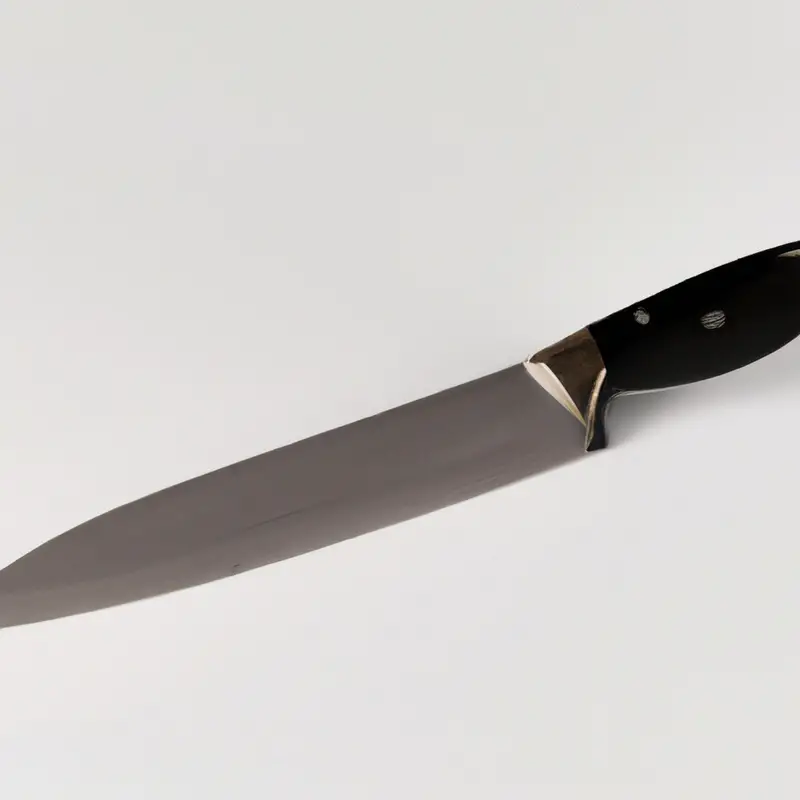
When to Seek Professional Help: Signs that Your Chef Knife Needs Repair or Maintenance
Even with proper cleaning, maintenance, and storage, your chef knife can still suffer some wear and tear over time. Here are some signs that indicate it may be time to seek professional help for your chef knife:
- The blade is no longer sharp: If your knife struggles to cut through food or requires you to use more pressure than usual, it could be a sign that your blade needs sharpening.
- The blade is chipped or damaged: Chips and dents on the blade can make your knife dangerous to use and could lead to further damage if not addressed immediately.
- The handle is loose or damaged: A loose or damaged handle can make your chef knife difficult to work with and could cause injuries if it comes apart while in use.
- Rust or discoloration on the blade: If you notice rust or discoloration on your knife’s blade, it could be a sign of corrosion or damage. In extreme cases, the blade may even be irreparable.
If you notice these signs, it’s best to seek professional help from a licensed technician or a manufacturer who specializes in chef knife repair and maintenance. Avoid attempting to fix the knife yourself, as it could lead to further damage or injuries.
Remember, a well-maintained chef knife is an essential tool that can last for years with proper care and attention.
Final Verdict
Keeping your chef knife clean and free of scratches is crucial for not only maintaining its appearance but also its functionality. By understanding the dos and don’ts of cleaning, as well as using safe techniques and cleaning solutions, you can ensure that your chef knife stays in top condition for years to come.
Remember to always handle your knife with care and to seek professional help if necessary.
By following these guidelines, you can be confident in your ability to safely clean your chef knife and enjoy its precision and effectiveness in the kitchen. Trust in the reliability of these practices, and let your newly sharpened blade speak for itself.

